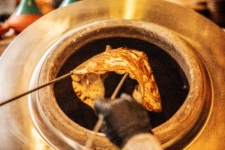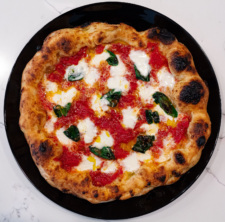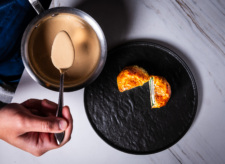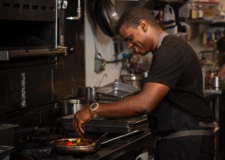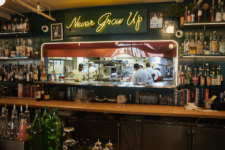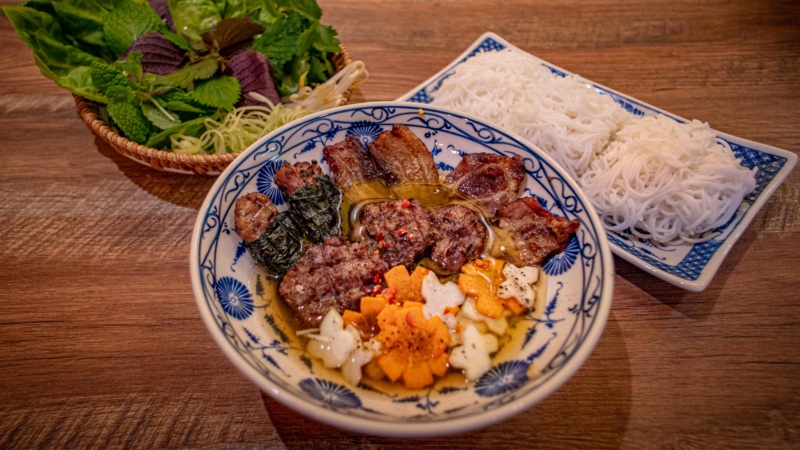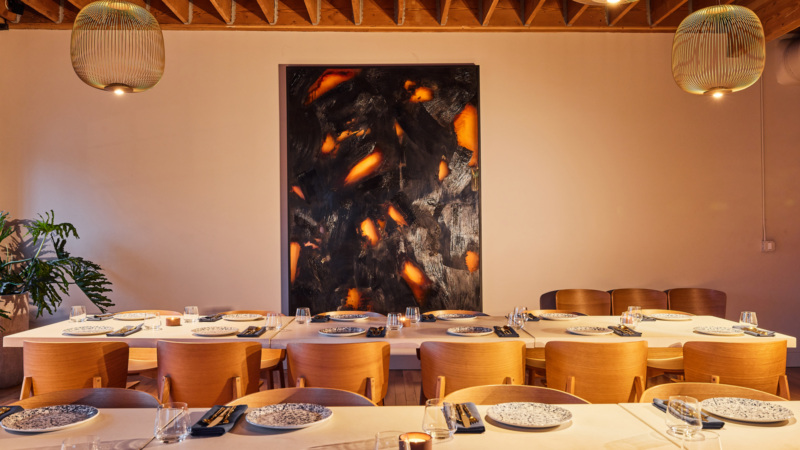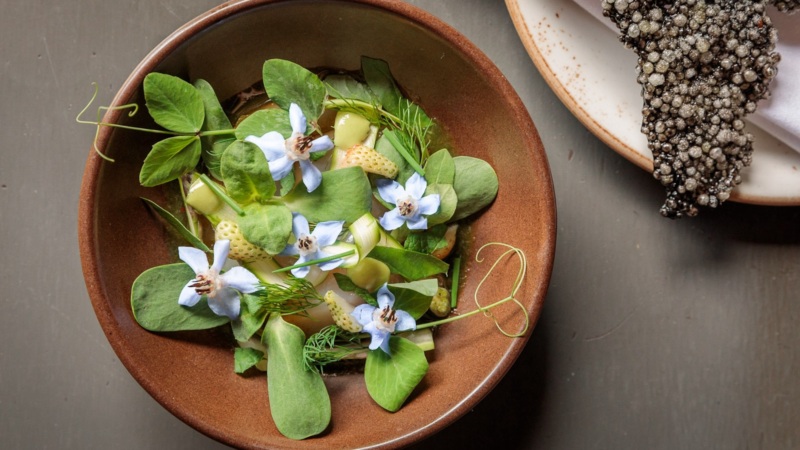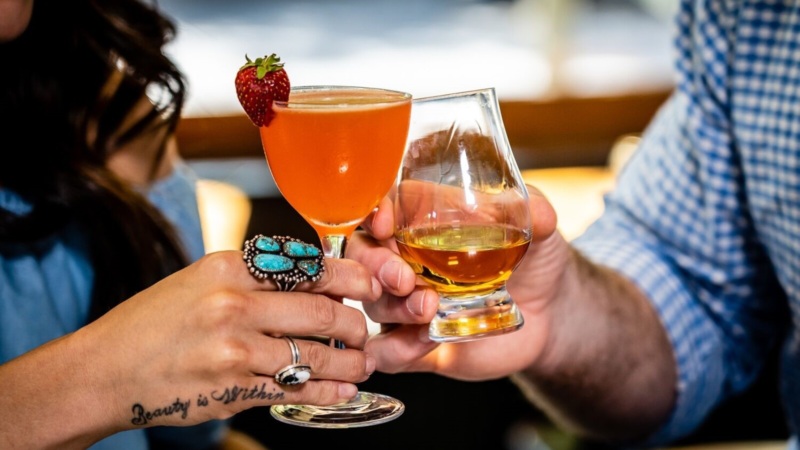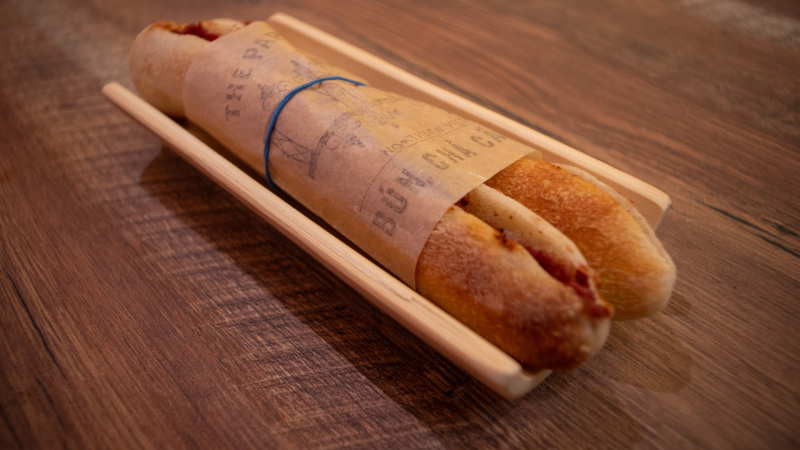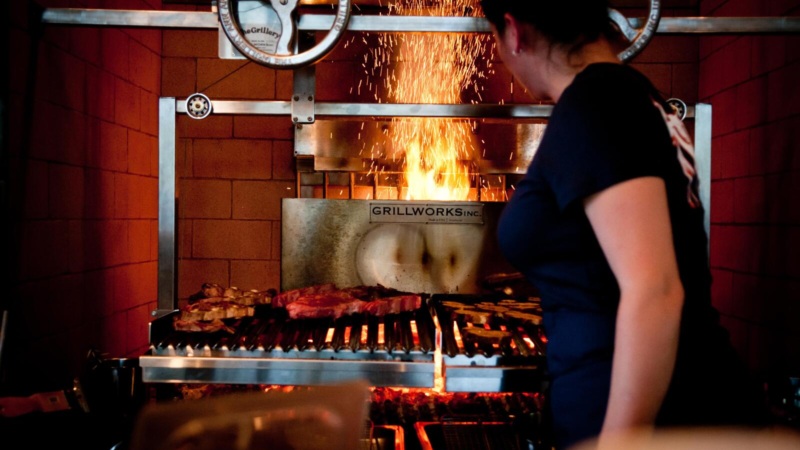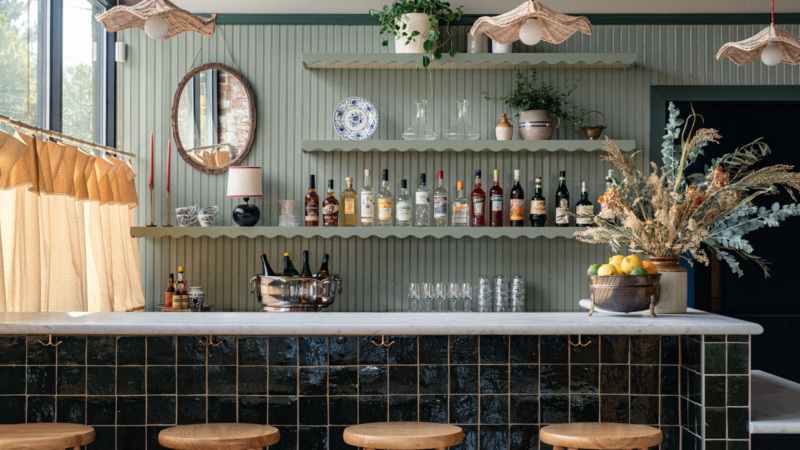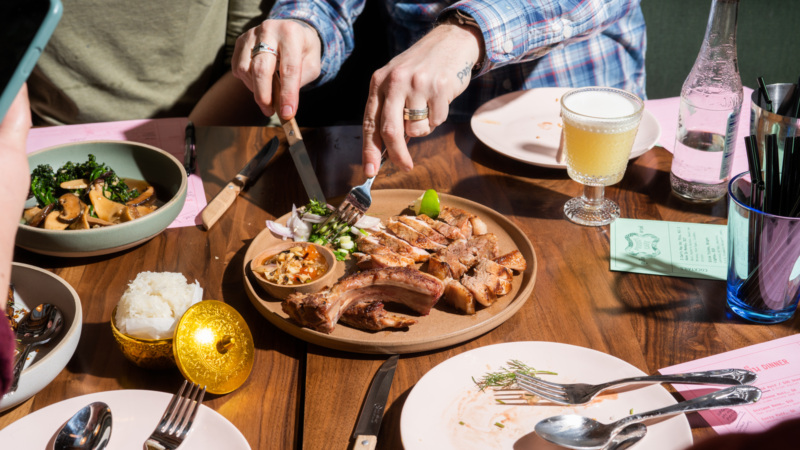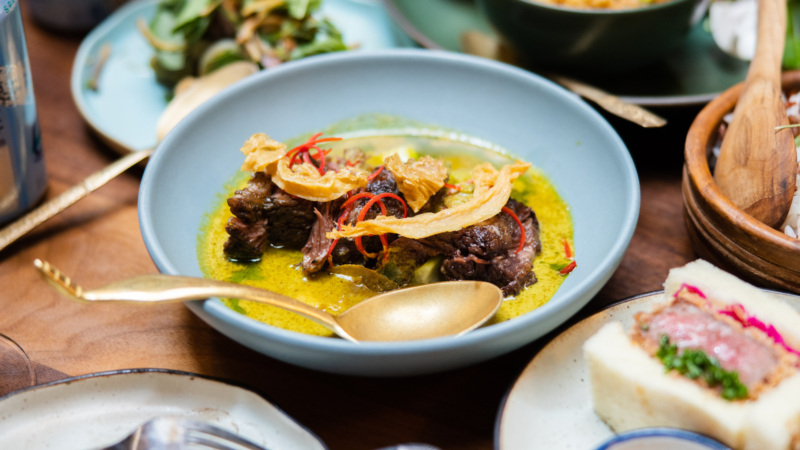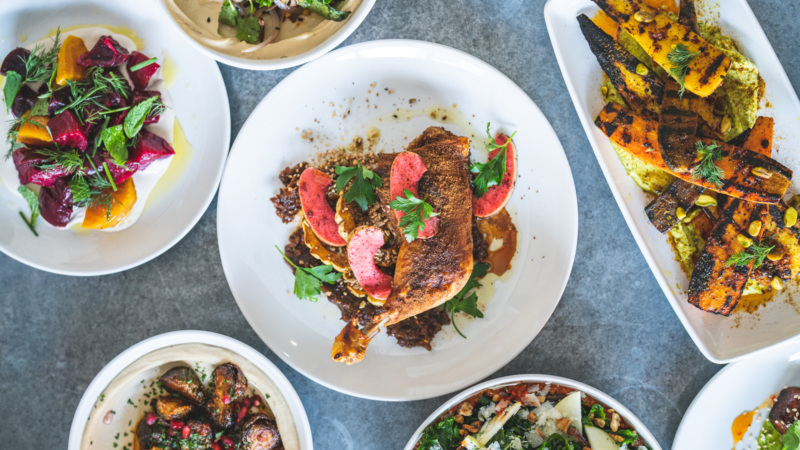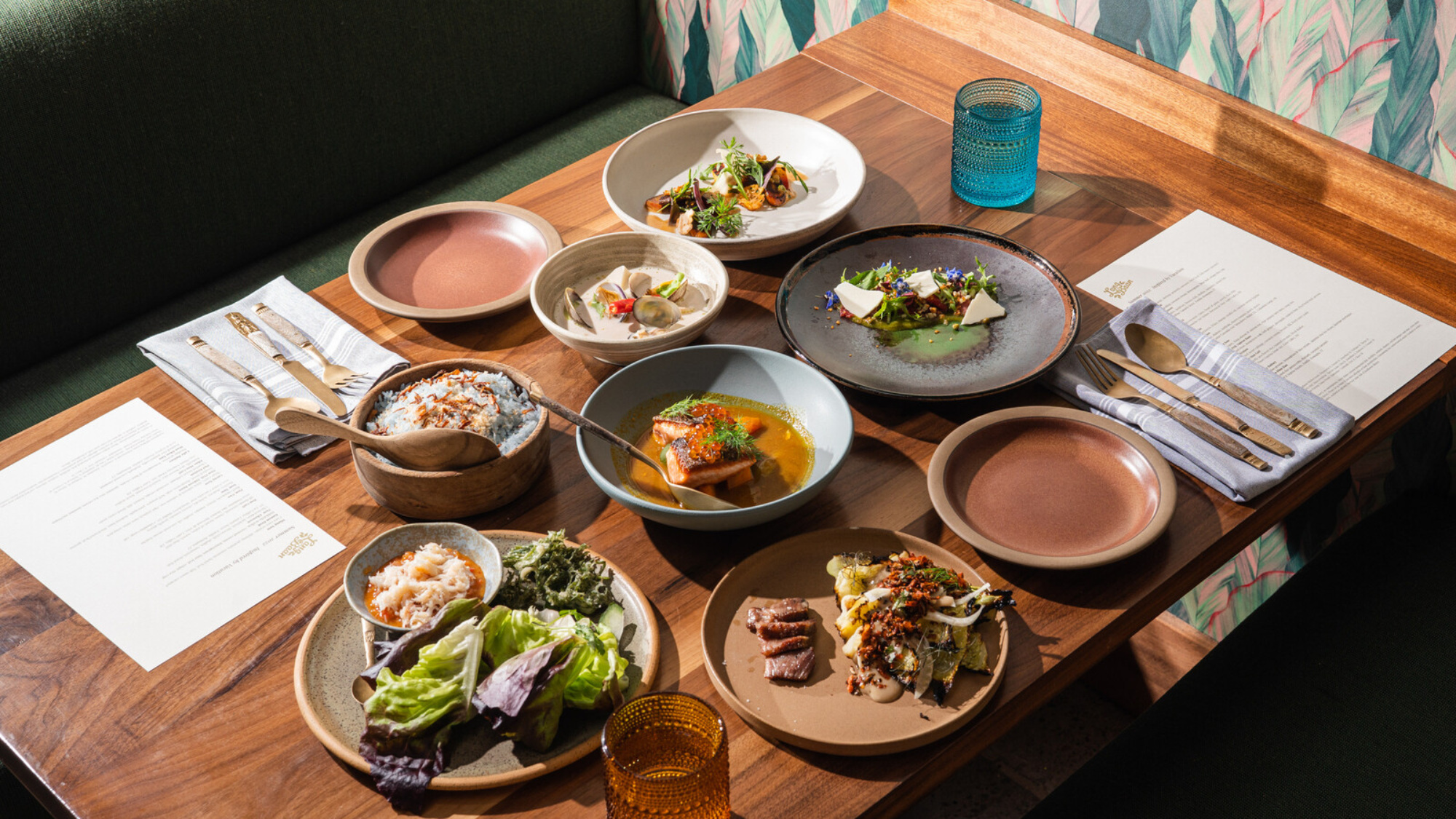
How Langbaan’s Earl Ninsom Turned Us All On to the Breadth of Thai Food
Earl Ninsom’s journey as a restaurateur began with a one-way ticket from Bangkok to Los Angeles. He was a fresh college graduate who had spent all of his life at that point in Thailand; his mom had gifted him the flight, hoping to give him the opportunity to make something of himself abroad.
It was his expectation that stateside, without the safety net of his parents, he would learn and grow and return home with some experiences under his belt. “The goal was for me to survive by myself,” Ninsom says.
The bar wasn’t particularly high. This was in 2000 — before Ninsom knew what a James Beard Award was or even envisioned running a restaurant. He was attending ESL school and working at a cousin’s Thai restaurant in Los Angeles, trying to figure out where life would take him next.
Little did he know, two decades later, he’d be helming six revolutionary restaurants: not merely transforming the dining landscape in Portland, Ore., with spots like Langbaan, but redefining what Thai food looks like in America —and earning accolades for it, most recently the 2024 James Beard Award for Outstanding Restaurant, a career-defining honor for any restaurateur.
Cooking has always been a part of Ninsom’s life, though. His earliest memory of preparing something from scratch was when he was 10 and his mom was sick; he took it upon himself to prepare a Thai porridge for her, in hopes of alleviating her illness. “Ever since then, my mom had me as her right-hand man to help make food for the family,” he explains. “And every time I would go and visit my grandmas, both of whom are really great cooks, I always helped them prepare things.”
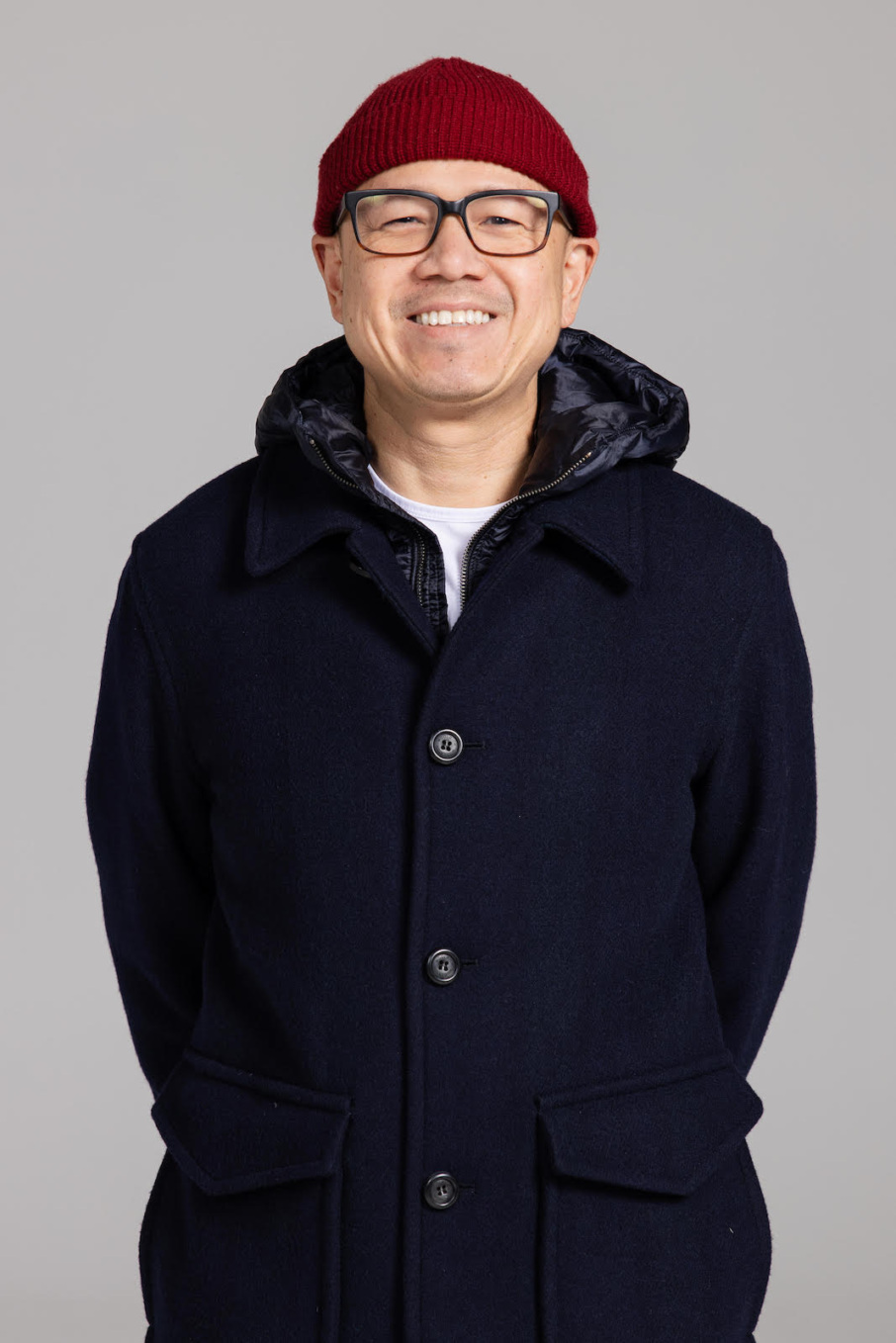

Ninsom’s dad hails from Southern Thailand, known for its bold, head-throbbing spices, while his mom’s side — where he grew up — is from Ratchaburi, just west of Bangkok, a place that specializes in boat noodles and milder curries. Because of this, Ninsom’s Thai culinary background is well-rounded. While he can handle the tear-inducing curries from his dad’s hometown of Surat Thani, he’s also always been able to appreciate the subtleties of central Thailand’s cuisine.
L.A.’s Thai restaurant scene, and specifically his cousin’s place, quickly provided Ninsom with both front- and back-of-house experience, but after a mere six months, Ninsom made his way to Portland, excited to leave behind the bustle and chaos of southern California. Although Los Angeles has a thriving Thai community, being around so many Thais — and their restaurants — can be uncomfortably insular at times. “I found people in Portland are really, really nice,” he explains. “That’s why I chose to live here.” Ninsom has now called the city home for over 20 years.
Resy Presents
Tables Worth a Trip
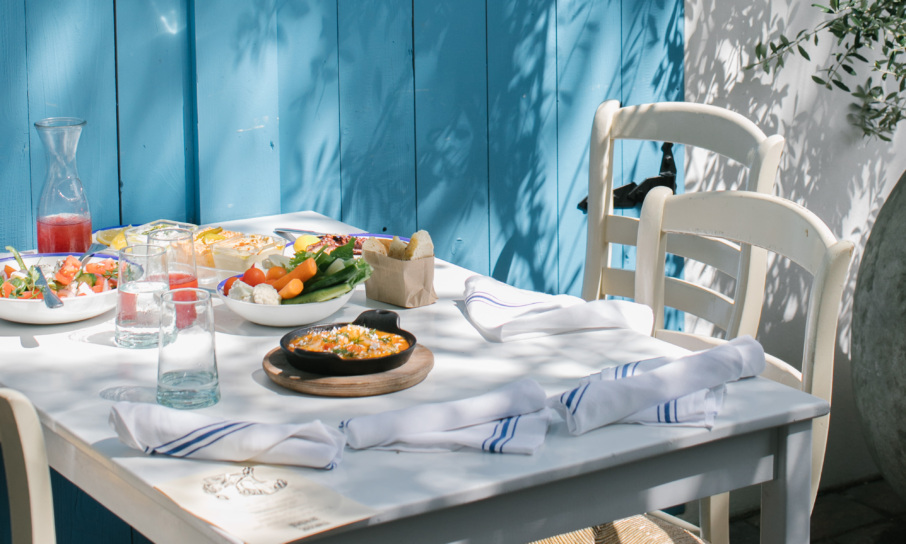
-
40 Restaurants Across America Worth a Journey
Our list-of must-visit tables this summer. - At Dakar NOLA, New Orleans Cooking Finds a New Path to Its Roots
- At Boston’s Somaek, A Melding of Family Ties and Korean Tradition
- The Resy Guide to California Wine Country For 2024
- The Ultimate Resy Guide to the Hamptons
- The Resy Guide to Cape Cod Restaurants for 2024
- The 2024 Guide to Dining on Nantucket and Martha’s Vineyard
After a short while in Portland, he realized he had the experience to actually run his own restaurant — although his initial thoughts were more pragmatic, and rooted in cooking skills. At the time, restaurants were “one of the easiest [places] to get a job that pays well,” he says. “It was easy for me because I grew up doing it every day—I just needed to be shown once and then I could do it.”
Once he solidified that desire, Ninsom headed back to Thailand and took cooking classes in Bangkok to further hone his culinary skills. He learned under chefs who had cooked in the Thai royal palace and ran acclaimed restaurants in the country’s capital.
Back in Portland, Ninsom opened his first restaurant, Thai Cottage, in 2008. It was a family restaurant with well-known American-style Thai hits, like pad thai and fried rice, and simple stir-fried vegetables. Although the restaurant was a success, it didn’t feel true to Ninsom. “It wasn’t the food I wanted to be making,” he admits. “It wasn’t what I wanted to eat as a Thai person.” He left Thai Cottage to his brother and sister, who had joined him in the U.S. following the 2008 political crisis in Thailand; the pair ran the business for 10 additional years. But he also realized that to be fulfilled, he needed to be more introspective, and deliberate, about the food he wanted to make.
There were blueprints to get to where he wanted to go. David Thompson’s cookbook “Thai Food,” today considered a must-read encyclopedia for anyone interested in Thai cooking, had earned a James Beard Award in 2003, and revealed a genuine interest among Americans in the nitty-gritty details of Thai cuisine. Pok Pok, which Andy Ricker opened in Portland in 2005, was making waves by serving up distinctly Northern Thai dishes despite being helmed by a non-Thai chef. If these two highly respected white guys could do it, why couldn’t Ninsom?
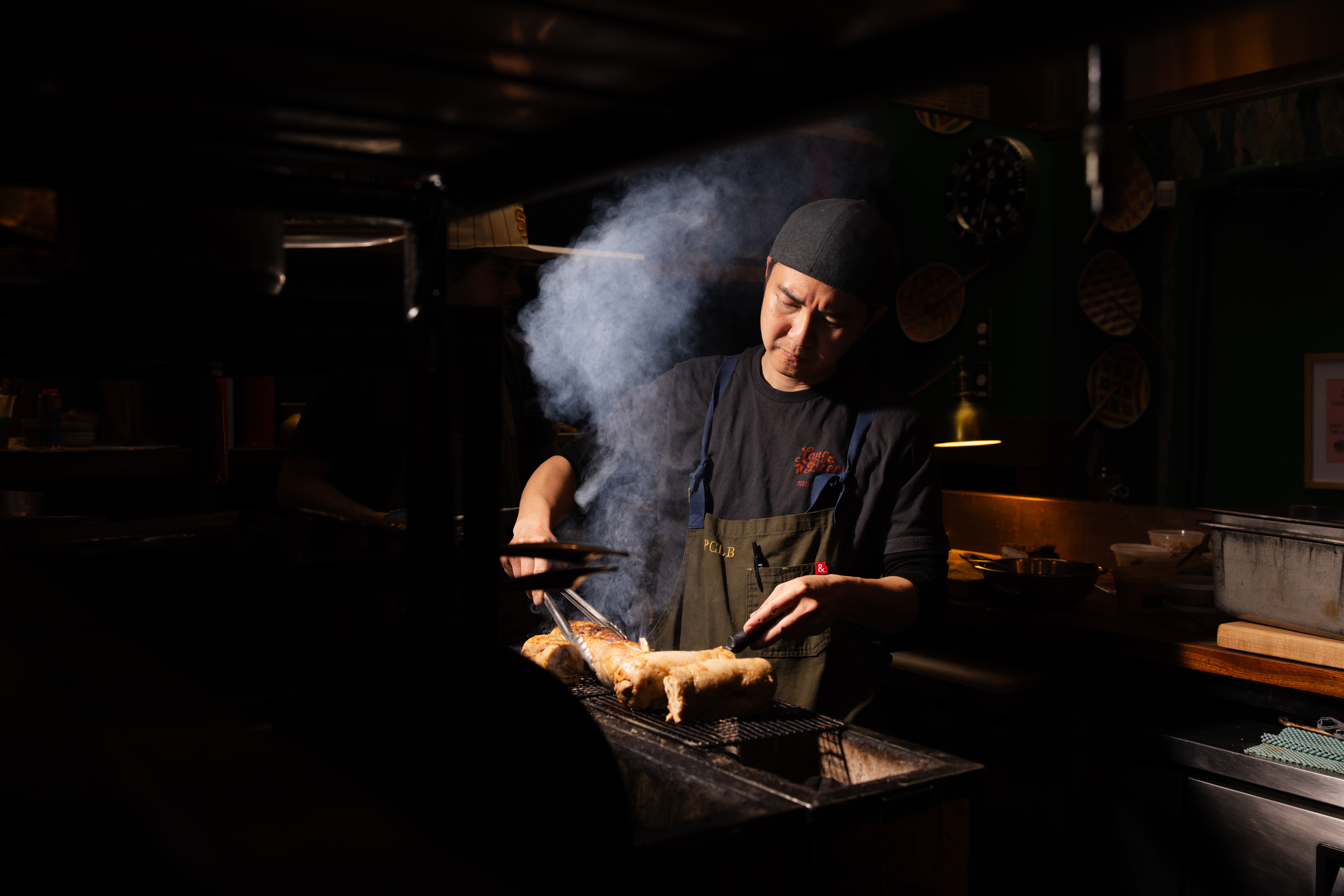
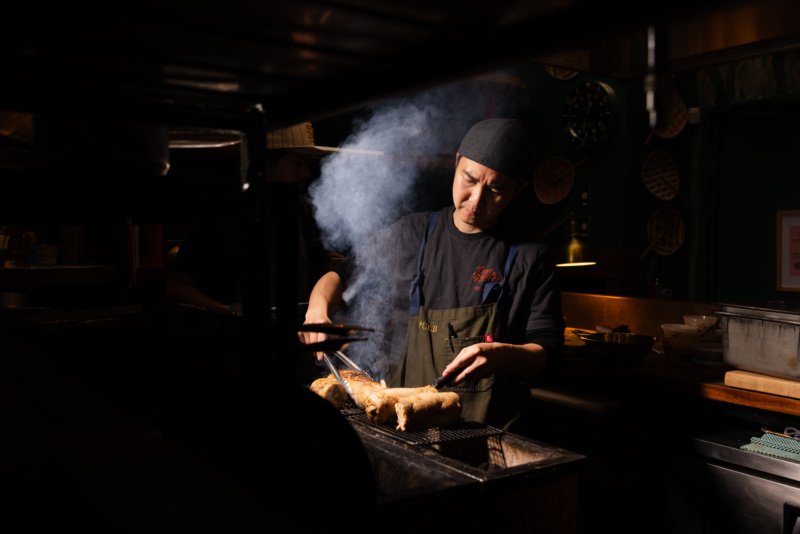
Boat noodles — one of Ninsom’s favorite dishes — felt like the right choice for his next move. Preparing soup with blood and sheets of tripe was a far cry from sticky plates of pad thai, but Ninsom felt both equipped for the challenge from a culinary standpoint, and also confident he could convince Portland diners to try something a bit more daring. In 2009, he opened up Mee-sen Thai Eatery, a small restaurant specializing in all things noodles. Yes, you could still get hits like wok-fired pad see ew, but the boat noodles felt true to him. Unfortunately, his enthusiasm for sharing his favorite dish was short-lived. This period taught Ninsom what it meant to grind. He worked six and a half days a week, slinging order after order of noodle soups. It burned him out; after a year he sold the business.
“I wanted to do something that made me happy,” Ninsom says. And it wasn’t so much the grueling hours — he knew what it takes to run a restaurant — as the endless cooking of dishes, namely all the things that weren’t boat noodles, that didn’t inspire him.
Still, he wasn’t dissuaded. He decided to partner with a friend and open up PaaDee in 2010, which he still owns and operates to this day. Its food, he explains, “is inspired by childhood memories. It’s what I ate in school and college.” This includes street foods like sour pork sausages, fried chicken wings, and chewy chive cakes drizzled with a sweet soy sauce. And there were — and are — also sophisticated takes on home cooked Thai meals, like a spicy red curry prepared with black cod, and a duck confit curry reminiscent of his youth in Ratchaburi. This became the true start of Ninsom’s culinary empire, and it reflected what might be considered a transitional period for Thai cooking in America — leaning on traditional recipes, but tweaking or refining them just a touch. By 2011, PaaDee, which means to bring forth goodness, began gaining traction. Write-ups were flowing in — from the local weekly to national media outlets. Ninsom was riding that wave of attention, and considering his next move.
In 2013, he participated in the now-defunct food festival Feast Portland, which brought chefs from all over the world to celebrate their recipes. This was the first time he tried the cooking of Thompson himself, whose restaurant, Nahm, earned the first Michelin star for Thai cuisine. For Ninsom, it was a totally different take on the flavors he grew up loving. He was enamored, and ended up flying back to Bangkok to apprentice at Nahm. This became the foundation for Langbaan, Ninsom’s tasting-menu restaurant within a restaurant, which opened the following year.
People are smart enough to understand the fundamentals of the food. So I can offer it in a different flavor, or with a different perspective.— Earl Ninsom
“Langbaan is based on what I learned at Nahm,” he explains — namely, cooking that was both detail oriented and specific. “We wanted to do this style of tasting menu that goes into Thai history, that we could change monthly based on themes.” Those themes have included floating markets, specific culinary periods in Thai history, Bangkok’s Chinatown, and Thailand’s Muslim communities. In following that route, Langbaan was pursuing a path not unlike Next in Chicago — although the themes weren’t quite as random as Grant Achatz’s itinerant choices. It was an immediate success, named Portland Monthly’s restaurant of the year the year it opened. After four previous acknowledgments by the James Beard Foundation, this year it finally achieved a medal for Outstanding Restaurant.
Langbaan’s current menu is a selection of greatest hits, as it were — favorite dishes from Ninsom and his chefs. There’s a reinterpretation of miang som, a betel leaf wrap featuring cara cara oranges and toasted coconut. A charcoal-kissed beef tongue salad is enriched with bone marrow. For dessert, Thailand’s beloved pandan flavor gets the macaron treatment and is paired with rhubarb. It’s a version of Thai food, yes, but more specifically it’s Earl Ninsom’s food — marked by an ambitiousness and playfulness that’s required of the best tasting menus, along with exceptional local ingredients. And with each of the themes, Langbaan continues to prove its larger point — which is that Thai cooking contains multitudes. It is, of course, quite intentional to provide a far departure from standard Thai fare on these shores, but more broadly, it makes the case that there are many prisms through which to consider the country’s long and diverse history.
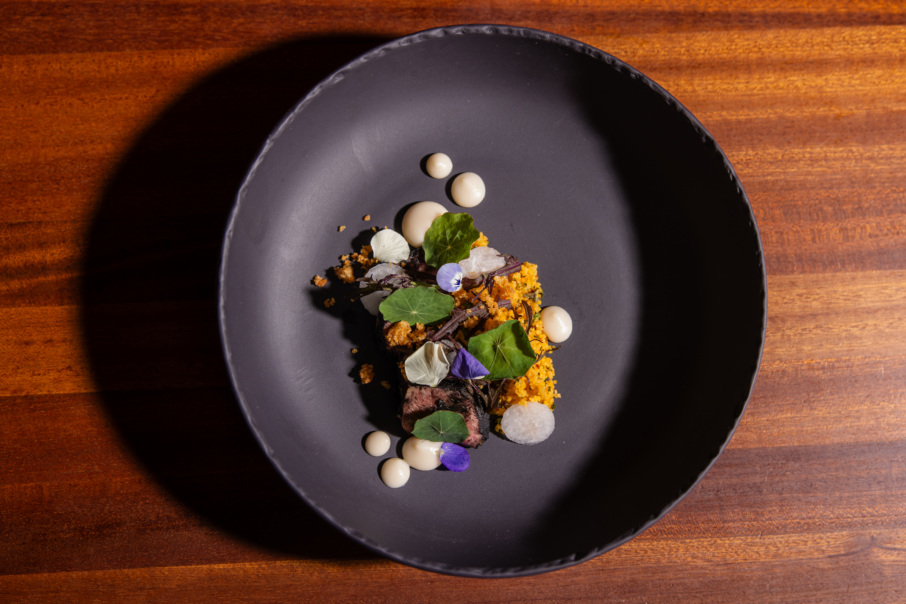
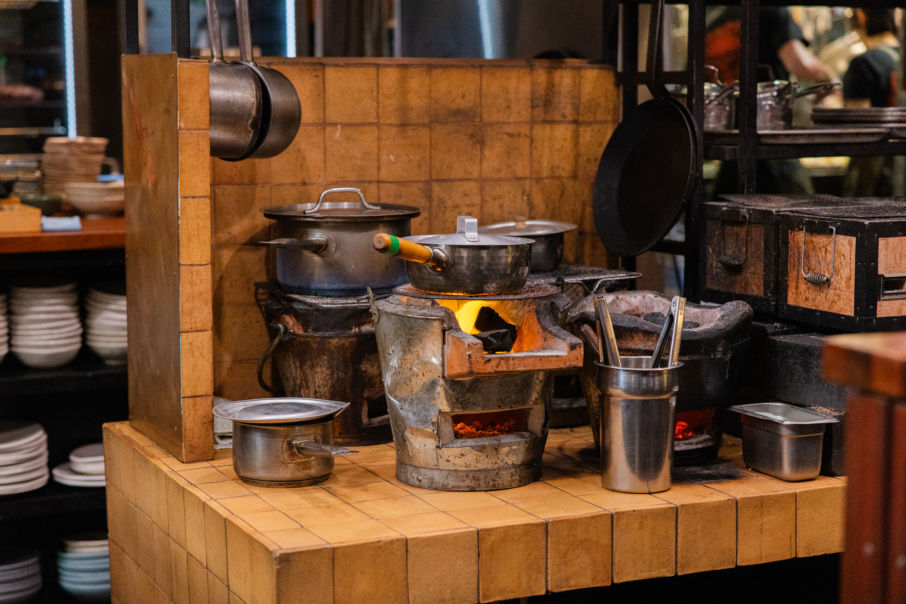
With Langbaan’s success — and the effort required to constantly create new tasting menus — Ninsom could’ve wiped his hands and felt complete. After all, he says, “Changing the menu was like opening a new restaurant each month.” It required planning, researching ingredients, and constant experimentation. “It was a stupid idea but it made me push myself to do something better every time,” he laughs. “It kept me creative.”
Which is why Langbaan turned out to be just Ninsom’s first next step. In 2015, he opened Hat Yai—an homage to his southern Thai roots. The city’s most famous export is its fried chicken, crowned with golden crispy shallots; that is, of course, the star at its namesake restaurant in Portland. Hat Yai sits on the Malay Peninsula, not far from the Malaysian border, and so in addition to the chicken are roti and curry sets, a nod to the influences of that country’s cuisine infiltrating this part of Southern Thailand, as well as a stir-fried dried pork curry that’s labeled as “Thai spicy” for its unflinching heat. This too tells a very specific and regional tale: People often consider Isaan home to Thailand’s hottest foods, but Thais themselves often point to the south as the origin of the country’s spiciest dishes. “In the south it’s rainy and sleepy, so people need something spicy to get energy to go about their day,” Ninsom explains, recalling the tongue-numbing dishes he grew up eating when visiting his grandparents in southern Thailand. “It’s the food that makes sense for the region.”
That, ultimately, is a perfect summation of Ninsom’s cooking philosophy — food that makes sense. It’s not what he knows will be popular, or food that everyone else is already cooking. It’s food that is true to his experiences of Thailand. “People are smart enough to understand the fundamentals of the food,” Ninsom says. “So I can offer it in a different flavor, or with a different perspective.”
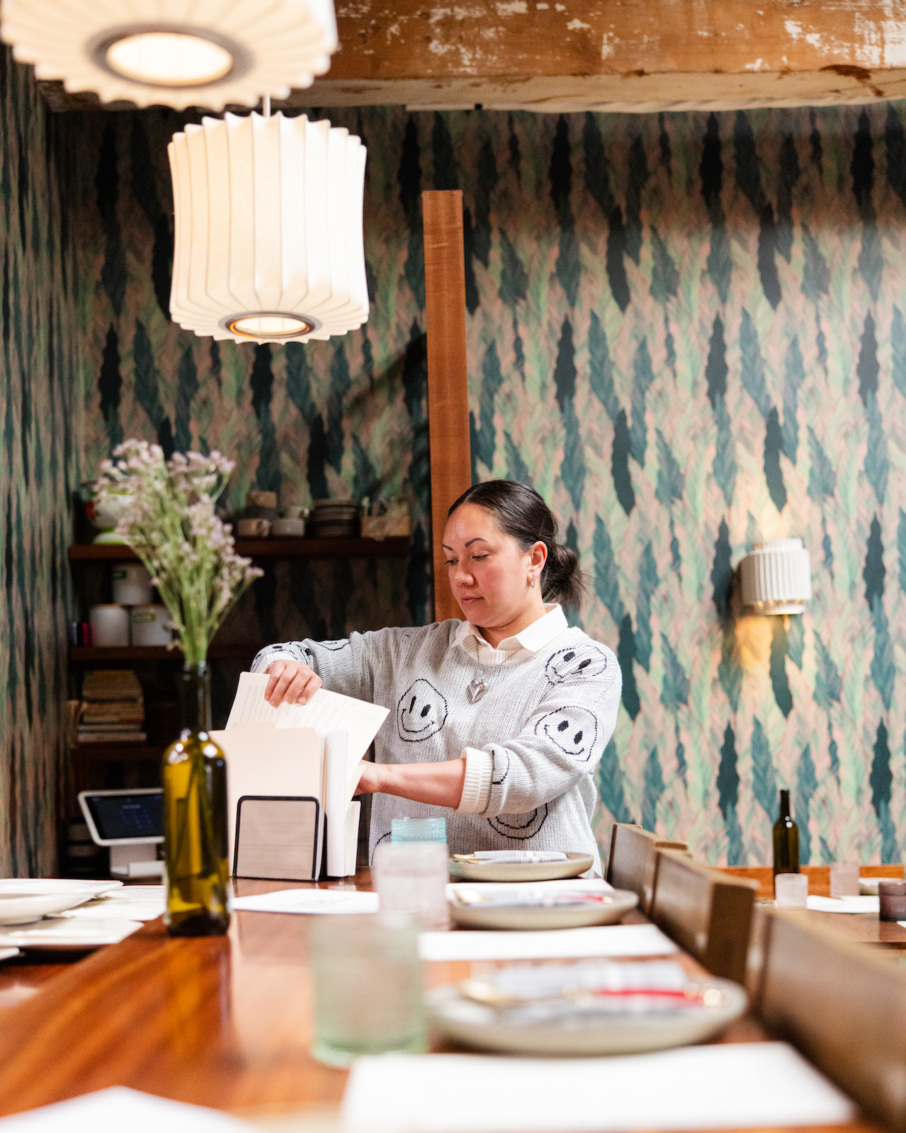
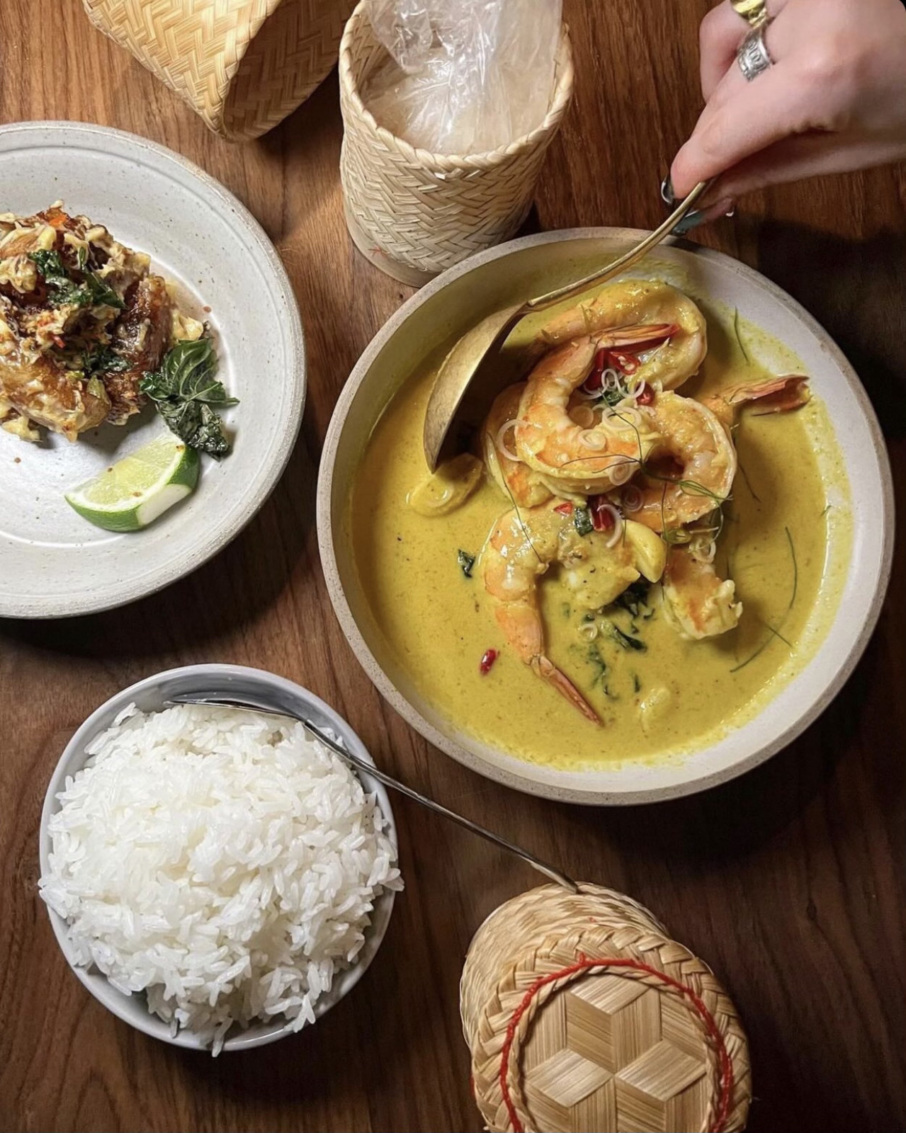
That has turned out to be the through line for the rest of Ninsom’s restaurant openings. In 2019, he opened Eem, a Thai barbecue joint featuring white curry with brisket burnt-ends and smoked pork belly stir-fried with basil. Phuket Cafe, a tongue-in-cheek commemoration of one of Thailand’s most touristy destinations, opened in 2022; a Thai take on paella is the star of the menu. And Ninsom’s latest offering, Yaowarat, opened just last year. It’s named after — and inspired by — Bangkok’s Chinatown, where diners can feast on bean curd dumplings, crispy noodles drowned in gravy, and a Thai take on mapo tofu.
Taken together, these offer a true cross-section of Thailand’s distinct flavors and traditions. That he has progressed through opening each of them has, perhaps unintentionally, placed Ninsom at the forefront of defining for Americans the full diversity of Thai cooking. Dine your way through them, and you quickly come to understand: Thais from the South eat differently from those that reside in Bangkok; the people of Isaan favor a style of laab, the meat salad, that is nothing like northern Thailand’s laab.
What was intentional was Ninsom wanting to impart these nuances to his diners — to prompt them to explore Thailand’s vast culinary landscape in a way that feels genuine — that, quite simply, makes sense. It is a culinary education, an excitement, that Ninsom wants to share.
And it would seem he couldn’t have timed his work better; after all, Thai food in America has come a long way in recent years. Pad thai prepared with peanut butter and ketchup has seemingly faded from the American consciousness; regional specialities like khao soi and fiery papaya salad now appear even at neighborhood Thai joints. Ninsom has witnessed how eager diners are to learn more; like his fellow cohort of modern Thai chefs, he finds diners embracing unexpected flavors with curiosity and enthusiasm: “If it’s real and it’s true and you can tell a story through your food, it’s not too hard for people to be accepting,” he says. And that goes doubly because of his location in Portland; the city’s residents have driven it to be a culinary incubator — one where you can eat daringly and well, rather than chasing a mantle of fine dining.
There’s still room to grow, however. “Sometimes, I feel like we’re behind London and Sydney,” he says, specifically when it comes to Thai food. But progress is coming quickly. There’s Kalaya in Philadelphia, which Ninsom finds thrilling. The food scene in Austin feels interesting and fresh to him as well, and provides inspiration whenever he visits . And of course, Los Angeles’s Thai food scene continues to be expansive while remaining faithfully Thai, with its night markets and noodle soups galore.
But Ninsom wants more Thai American chefs to abandon the notion that their food must be restrained, bland … predictable. If he has to lead that charge, and keep opening more restaurants to highlight specific slices of the Thai repertoire, he’ll keep doing it. But he also wouldn’t mind some company.
Kat Thompson is a Bangkok-born, Los Angeles-raised writer. She was previously a senior staff writer of food & beverage at Thrillist, and has written for Food & Wine, Bon Appetit, Eater, and more, and written for Resy about such restaurants as Bangkok Supper Club. Follow her on Instagram. Follow Resy, too.


